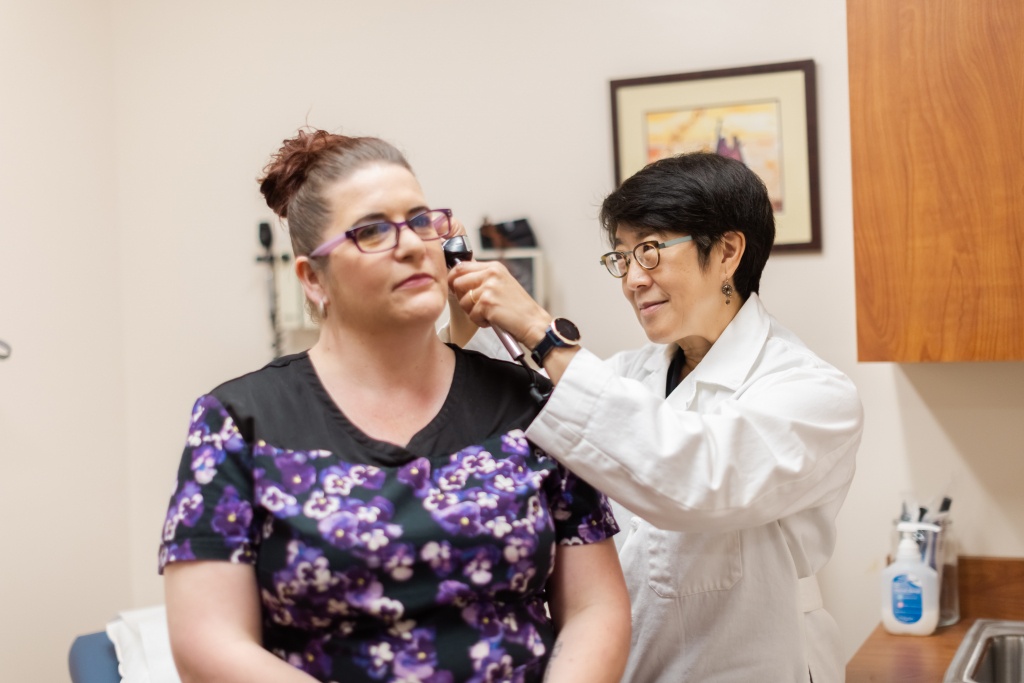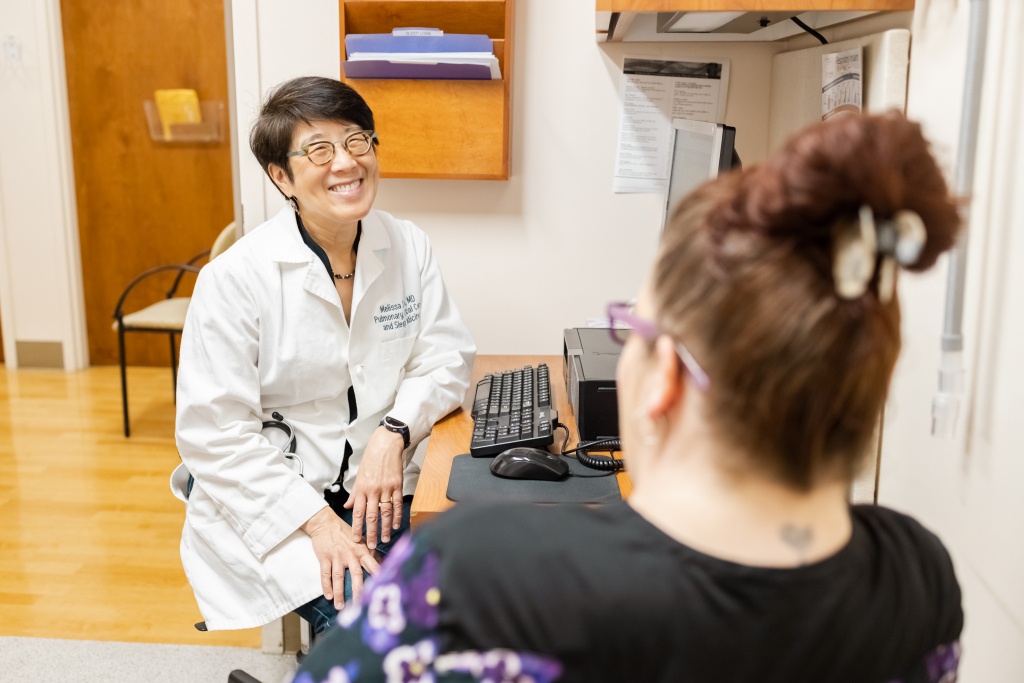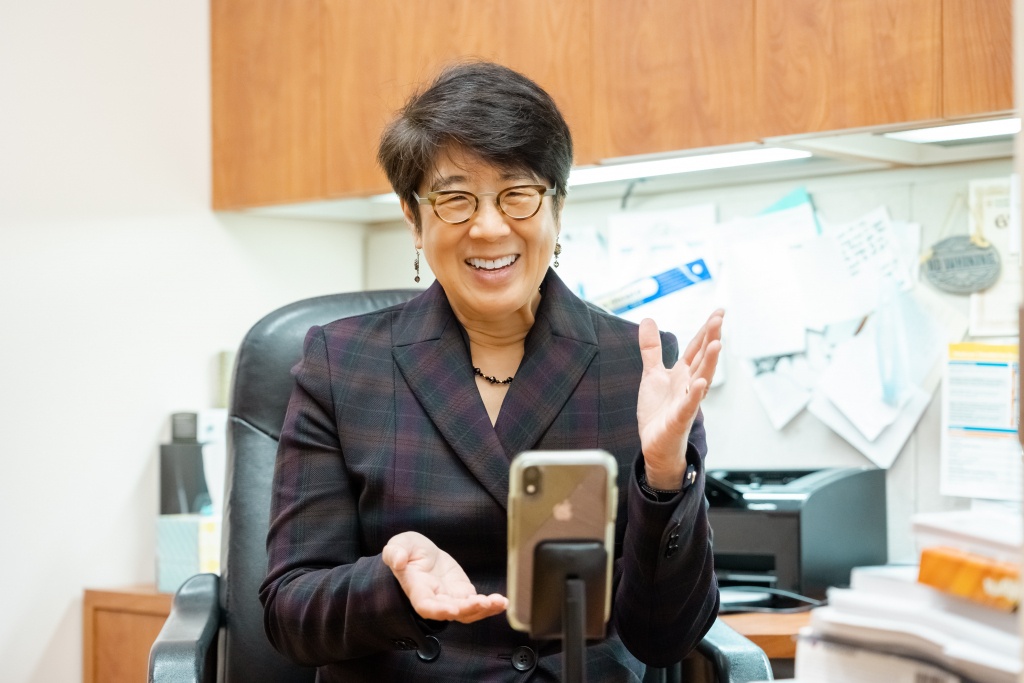How Patient-Centered Care Drives This Independent Physician’s Specialty Practice

A strong community influences growth
Moving to the Bay Area from Ohio to complete her fellowship at the University of California-San Francisco (UCSF), Dr. Melissa Lim was unaware of the impact this move would have on her personally or professionally. While she was ready to expand her clinical experiences and develop her professional skills, what she didn’t expect was to find a diverse professional community where she felt seen and supported.
“As an Asian woman stepping into those elevators at UCSF (University of California – San Francisco) to the Cardiovascular Research Institute for the first time, and seeing that every single person was Asian going to the fellowship floor, it was astonishing,” she said. “It was a remarkable experience. I’d never been in a majority before.”

This feeling deepened while in her fellowship in the Pulmonary and Critical Care Medicine departments at UCSF, where Dr. Lim met a circle of mentors who would deeply impact her future as a physician. Treating her as a professional and collaborator, rather than as a student helped her become a leader in a field where the number of women, especially of a diverse background, has been stagnant or worsening in the past decade.
These mentors introduced her to the Direct Primary Care (DPC) method, not only sharing what it takes to develop an independent specialty practice, but also the independence running a DPC offers physicians for work life balance, ultimately allowing more space for a patient-centered practice. When she was called to support a pulmonologist, Dr. Bernhard Votteri at Sequoia Hospital, she gained first-hand experience, solidifying her decision to dedicate her career to the DPC method.
“I absolutely loved it. I loved his [Dr. Votteri’s] set-up, the variety of patients he was seeing, and his independence—how he could create whatever day he wanted,” she said.
In 2000, Dr. Lim joined his practice, Redwood Pulmonary Medical Associates as a partner.
Centering on patient needs leads to specialization
Dedicating herself to a lifetime of learning and patient-centered care, has been key to the growth of her practice.
“As your practice grows, you become more and more involved in a certain area because of your patients,” she emphasized.

By having more time with her patients, she is able to cultivate deeper relationships and hone in on their specific needs. Which led her to understand the deeper connection between the act of sleeping and pulmonary care. Pulmonologists are trained to manage sleep disorders, such as obstructive sleep apnea, a condition characterized by abnormal breathing during sleep, according to the Sleep Foundation. But, as she encountered more patients with growing sleeping problems, she realized this training was not broad enough to actually help her patients live fuller healthier lives. She knew she needed to understand both the lungs and the act of sleeping from a clinical level.
Inspired by her patients, she became a board certified sleep specialist and acquired the Sleep Center at a Sequoia Hospital. Now she is able to study her patients’ sleep in a clinical setting, allowing for better overall patient care with specialized diagnosis and more effective treatment plans.
“Being in private practice allows you to create that kind of variety. And I’m not really being forced to pick an area of just specific expertise, and focus mostly on that clinical problem. It’s a broad mixture of patients and their medical illnesses.”
“Create your own clinic without walls”
Keeping her patients’ needs as her top priority requires running a flexible practice with open communication with other local physicians and utilizing emerging technology.

Dr. Lim credits living in the Bay Area with cultivating a community of independent physicians. While she is an expert in her field, relying on trusted referrals to peers who specialize in fields outside of her scope, is essential to supporting the success of her patients’ healthcare experience.
“You don’t care for patients in isolation,” she said. “You take care of patients as a team, even when you have a private practice.”
Dr. Lim encourages aspiring and current independent physicians to develop collaborative relationships with local physicians they admire and respect. As you see patients over longer periods of time, you get to experience the many aspects of their lives and what impacts their health, said Dr. Lim. You’ll be able to develop more patient-centered relationships if you’re attuned to their needs that you can’t meet alone as a primary care or specialty physician.
“It’s definitely always leading with compassion, and putting the patient at the center of the story. And that’s something I’ve always believed and felt through my training. And I’ve tried to carry those same values and nurture that within our practice as a whole, and everybody that works within it.”
-Dr. Lim
Early adaptation of Elation Health has also helped to manage her patients’ care and communicate with them, making it easy to transition to telemedicine during the COVID-19 pandemic. Currently, her practice is working on an integration tool that will help the community of independent physicians at the practice build patient care plans directly in their own health cloud.
Advice to aspiring independent physicians
Committing to lifelong learning goes hand in hand with sharing her experiences to the next generation of independent physicians. To support their journey, Dr. Lim shared three key areas to have success with the DPC method:
Build a community: Going back to her early experiences of inclusion and mentorship in the medical field, she stresses the importance of communities that support your growth and offer real world experience in your journey. Dr. Lim advises physicians to cultivate relationships with their peers specializing in different fields, building a trusted networking and referral program to promote the best care for your patients
“Even when you have a private practice, you’re taking care of patients as a team of specialists,” she emphasized.
Know Yourself: Look deep inside to learn what drives you, inspires you, and what you ultimately want and need.
“You have to know what you think was going to make you the most comfortable and the happiest.”
Stay informed: Don’t just read and stay up-to-date with medical and industry-related news. Be a global, informed citizen. The environment certainly impacts personal and public health.
“Keep up with what’s happening on a society and governmental level that’s going to affect your livelihood,” she said.
Be Creative: Bring your values and creativity into your professional life. This will help your problem solving and critical thinking skills.
“We can make decisions, make mistakes, make decisions quickly to correct those mistakes. That’s one of the other benefits of being in a smaller practice, in a smaller business, is that we’re more flexible than perhaps a large institution that you’re trying to affect change in.”
Adapting to patient needs looks different for every physician. However, staying ahead of the curve with technology, developing community relationships with other physicians, and committing to a lifetime of learning can provide an aspiring physician a successful path to independence. Centering a patient’s needs in your own professional development, too, can help you steer through the curves and turns in that path. Under Dr. Lim’s care, a patient’s story begins and ends not just with being seen, but feeling seen.






